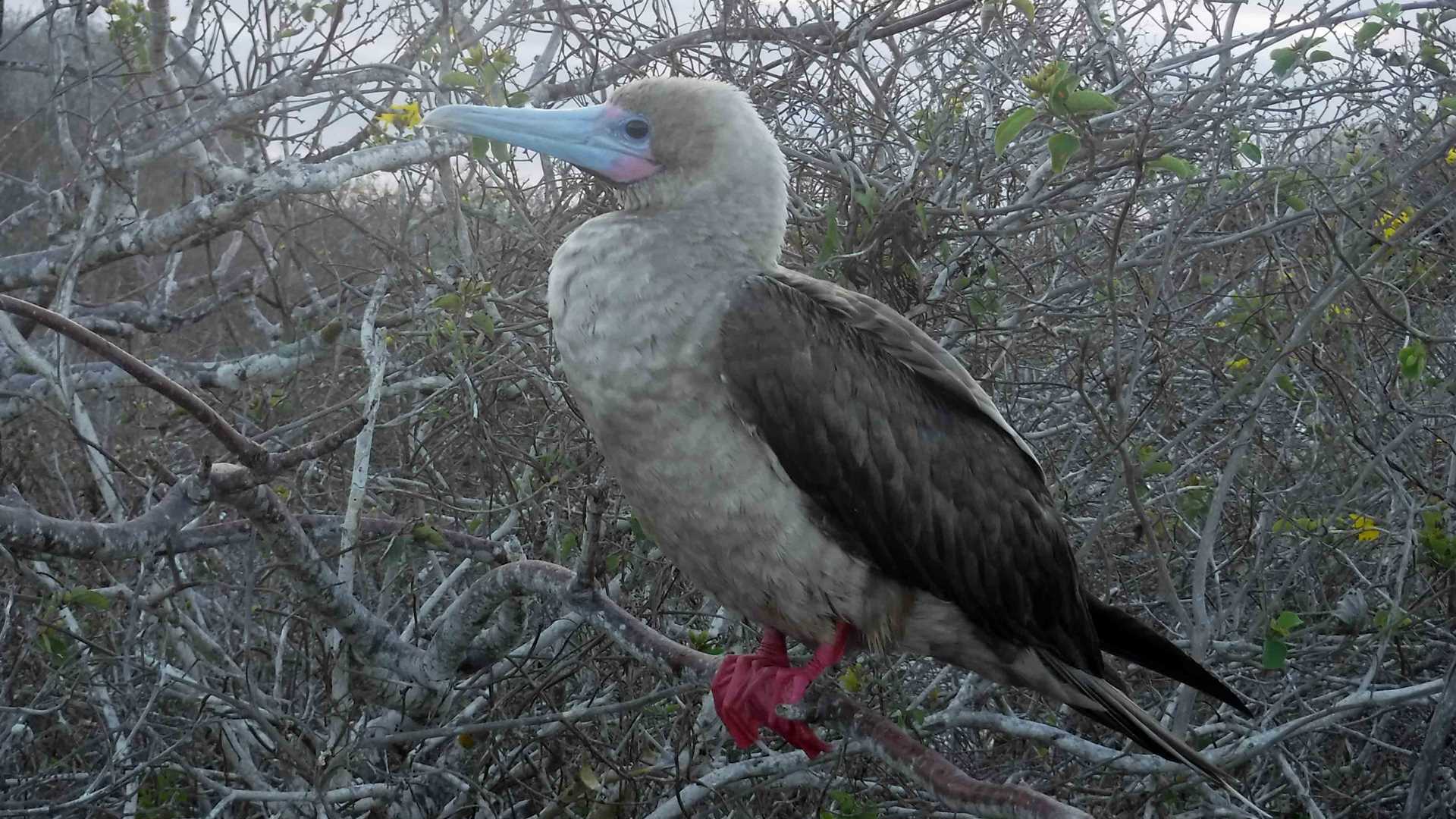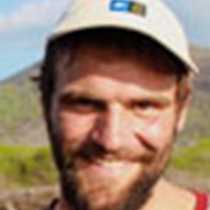Genovesa, otherwise known as Tower Island, is located in the northeastern realm of the archipelago, far from the central islands, and it is home to over one million seabirds. This island is so diverse and unique for many different reasons: It is a submerged volcano, there are no land reptiles are found here, four of the rarest species of finches live here, and the owls are daylight hunters due to the lack of Galapagos hawks, which is consider the top predator of the rest of the archipelago. Our adventure began with a walk, starting at the famous Prince Philip’s Steps (el Barranco) where we were surrounded by Nazca boobies, red-footed boobies and frigatebird chicks. Walking inland, we observed hundreds of storm petrels fluttering around the brown rocks, or hiding inside the lava tubes or crevices. After few minutes, we found our first short-eared owl resting at a crevice, almost invisible to the naked eye due to its perfect camouflage. Soon after, we saw another, near to the trail, hiding under a bush. During our walk back to the landing site, we observed many red-footed boobies perched on some branches of palo santo trees, and others were incubating eggs in their nests. We were also able to spot magnificent and great frigatebirds with their chicks, and of course some curious Nazca boobies walking nonchalantly along the flat terrain.
Back aboard, we prepared for our last snorkeling outing of the week. We had close encounters with many fish during our last exploration of the undersea realm—seeing them up close brought excitement and admiration. After this great adventure, we came back to the National Geographic Endeavour, anchored inside Genovesa caldera, to be briefed about our departure and to enjoy our last delicious lunch, made with pride by our excellent culinary staff.
After lunch, we were ready to start our next adventure—kayaking along the vertical cliffs of the caldera. We set out, paddling through the calm waters in search of fur sea lions, the second species of sea lion that inhabit the islands. We saw some of them resting on the rocks and some in the water; their big eyes and small bodies made easy to differentiate from the sea lions we have seen thus far. After kayaking, we headed back to the island, but this time we arrived to the white coralline beach inside Darwin Bay. Walking along the seashore, we observed red-footed boobies, swallow-tailed gulls, Galapagos doves, mockingbirds, frigatebirds and two of the rarest species of finches: the large ground finch and the sharp-billed ground finch together. It was late when we returned from our walk, and the sun had begun to disappear in the west. Marchena Island was visible in the distance as we made our way back to the ship, watching sea birds returned to this island that captivated us throughout this magical day.









